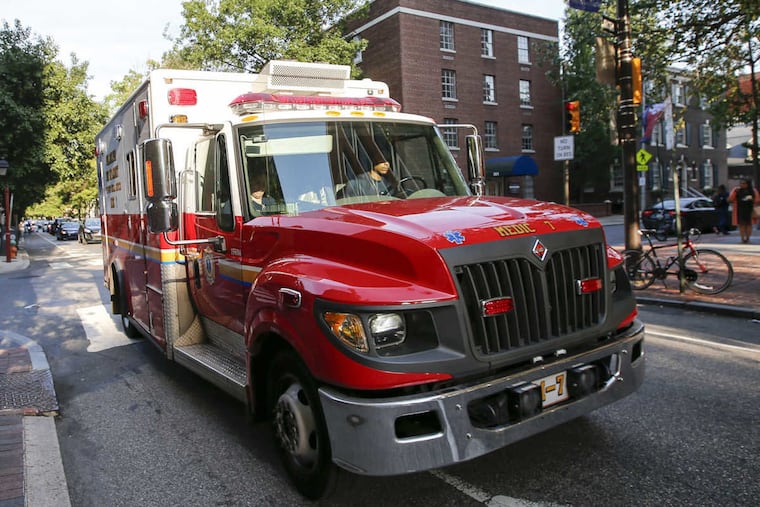This is my lane: Philly doctor on why advocating against gun violence is part of the job | Perspective
Visiting my once healthy, happy patients in the ICU after their lives were altered or ended by a stray bullet is my lane.

As I rushed into the intensive care unit, the description I overheard was terse and chilling: "13-year-old, no past medical history, GSW to head … neurosurgery following."
I entered the child's room to find his weeping mother taping something on the wall behind his bed. The lights were low. The undulating hum of the ventilator and the low pitch of the drains protruding from her son's misshapen skull filled the room with sounds familiar to those of us who know what a "GSW" – gunshot wound – to the head really means.
Since his birth, I have cared for this child at our pediatric clinic, in one of the most concentrated areas of poverty, of early mortality, in America. Violence is not unusual here in North Philadelphia. But no one ever gets used to it.
I could not give this mother what she wanted – to turn back time. Time before her happy, bright boy jumped into his cousin's car, excited about getting a haircut. Time before a bullet, aimed at someone else, struck her child's head at the temple and exited through the top of his skull, shattering bone and brain. Time when her boy's only physical problem was the thumb-sucking that made his teeth protrude.
What I could do was hold her hand and silently keep watch with her. With each ventilator-directed breath, the side of his head billowed out like a sail, lacking the protective temporal bone that had to be removed to relieve pressure on his injured brain. We looked together at his swollen face, at the plastic oxygen tube pushing against his teeth as his thumb once did.
This was not the first time my pager had summoned me to the ICU to see a child and a family shattered by bullets. There was the 18-year-old, headed home after a hard-fought basketball game, stopped by three bullets to the back. The 12-year-old who took a bone-destroying bullet to the leg while walking home from school. The 3-year-old, playing with Barbie dolls on the porch, struck through the neck. The 17-year-old, a star football player whose once muscled legs are now atrophied from paraplegia. He had just walked out of a corner store, clutching a bag filled with treats for his younger brother, when a bullet struck his spine.
I am a primary-care doctor, not a trauma surgeon. But mothers ask for me. They want me to explain the complex care that their children are receiving, which I gladly do. They want me to offer them hope, though so often I cannot.
They want a witness in a white coat to make sure that the ICU team knows that their child is so much more than the GSW in Room 7, Room 3, Room 1. That their child was entirely perfect until he or she was in the wrong place, at the wrong time, in a city where more than 140 children have been shot so far this year.
Back in Room 7, the mother sits with her knees curled up, her hand on her abdomen just where she first felt her baby boy kick and hiccup.
She told me what had been explained to her, that in the rush to save her boy, the piece of skull that was removed was not placed inside his abdomen – the usual procedure to preserve the bone so it might be replaced. I imagined the bloody bone, discarded in a metal bucket next to the operating bay that saved his life.
"Now they are going to have to make one to fit his head once the swelling goes down," she said. This is what she wanted to talk about, so I listened silently, knowing full well that no medical technology could replace what her child had lost.
I made sure that she had food, which she refused. Then I looked at the wall above my young patient's head and noticed what his mother had been doing when I arrived. Like nearly every mother I have visited over the years in the ICU, she had been putting up photos. Her beloved son in his football uniform. In his grade-school graduation cap and gown. With his little sister. As a baby.
The NRA recently tweeted something telling doctors to "stay in your lane" when it comes to advocating against gun violence.
>> READ MORE: 'This is our lane': Philly-area doctors blast NRA over hostile tweet
Visiting my once healthy, happy patients in the ICU after their lives were altered or ended by a stray bullet is my lane.
And from that lane, I ask all of our elected leaders: Look at your own children's pictures that you keep in your home, at your desk, on your phone. Now imagine those photos taped above the bed in ICU Room 7. Imagine.
Daniel R. Taylor, D.O., is an associate professor at Drexel University College of Medicine and director of community pediatrics and child advocacy at St. Christopher's Hospital for Children.